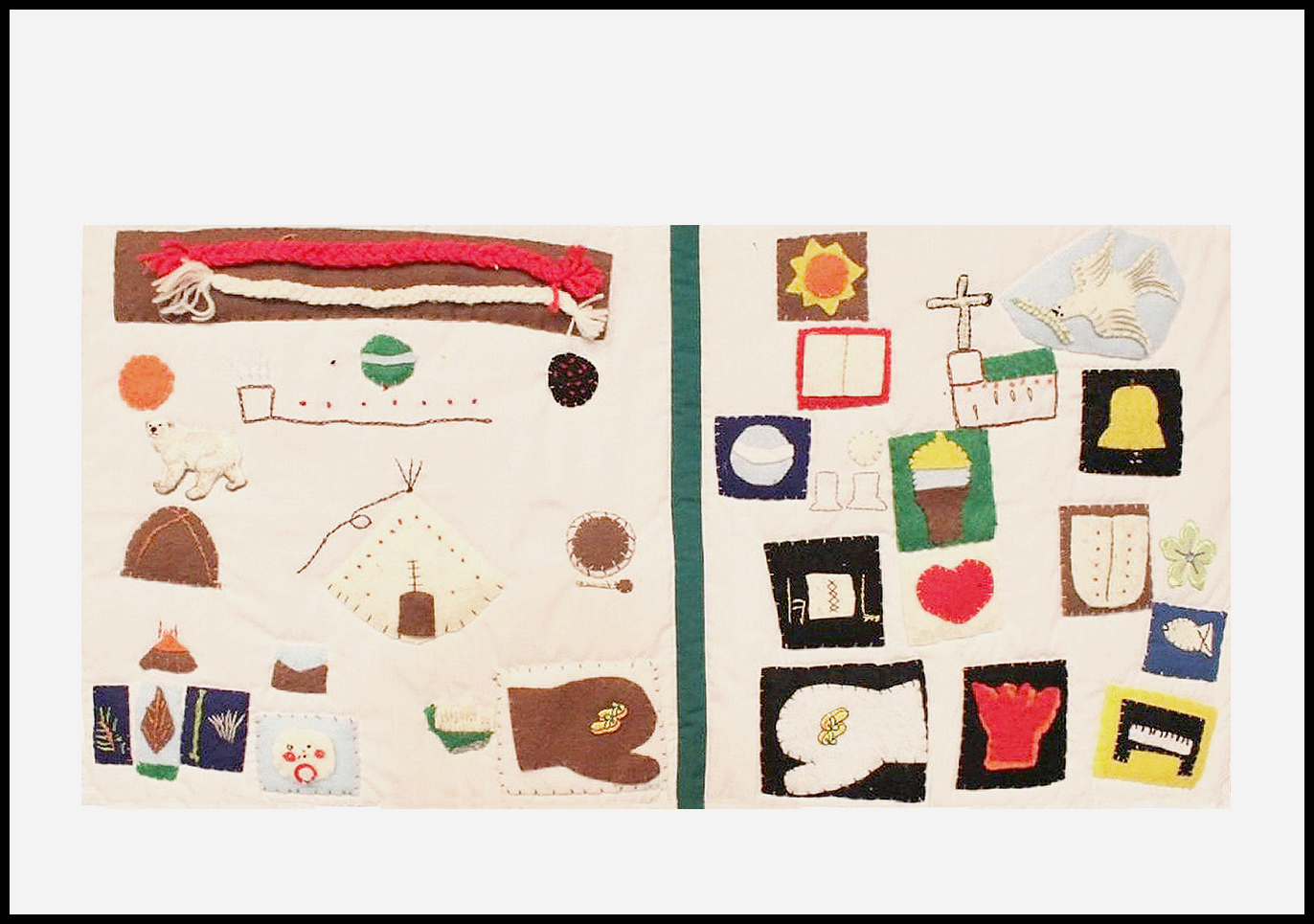
Shirley Williams, Two Worldviews of Anishinaabewin Philosophy.
A patch from the group quilt project
Kawartha Truth and
Reconciliation Support Group
The KTRSG is a monthly meetup group of first peoples and settlers based in Canada, who collaborated to make this quilt. While quilting they talk about the brutal history of Canada’s colonial project, racism, and inequality.
Reconciliation Support Group
Each quilt panel illustrates an individual and varied perspective on the theme of the legacy of the residential schools in Canada. The residential schools were religious schools meant to convert and assimilate indigeous children to a white Euro-Canadian culture. Many patches illustrate an alienating fracture in the psyche that conjures images of science fiction nightmares, the total inversion of a life, including family, internment, abuse, and trauma. Other patches feature images of their endangered culture as an insistence of their identity.
In Williams’s panel (above) we see terror in the subtle fractures of the everyday mundane. The milieu of the two cultures are paired to show their similarities, as if two worlds are separated only by a fun house mirror.

This panel by Dixie Shilling is an abstract depiction of a traumatic memory by the artist about her time at the residential school. One day while at school a girl was removed from class and placed in a car outside. The top row represents the girl’s removal from the classroom and placement in the car, while the middle and lower rows reflect the surreal surrounding scene of sunny skies and a giant school lawn. The girl is likely one of the missing or murdered indigenous women and girls of Canada and the United States, an epidemic that has been happening since 1980, and was only recently officially acknowledged by the Canadian government.

This panel illustrates a modified medicine wheel. The alterations were made to help the artist remember the purpose and meaning of each aspect, like a study card or cheat sheet, lessons she was given as a child, before her placement in a residential school.
The Medicine Wheel of the Four Directions by Alice Olsen Williams

In this panel Nabigon-Howlett tells the story of a Canadian Aboriginal who was sexually abused during his time at the Pelican Residential School. He later helped convict his abuser, who received four years of imprisonment for the abuse of 19 boys.
The Rabbit Fur Blanket by Sheila Nabigon-Howlett
The Rabbit Fur Blanket by Sheila Nabigon-Howlett